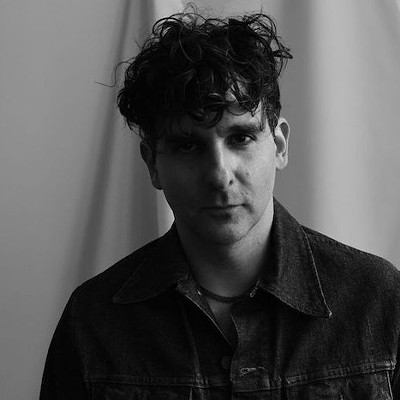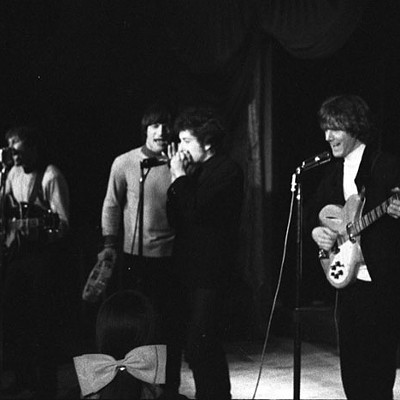Goodnight, L.A.: The Rise and Fall of Classic Rock – The Untold Story from Inside the Legendary Recording Studios
By Kent Hartman
Da Capo Press, 304 pp., $27
This book is something of a spiritual sequel to Hartman’s previous book. But while his The Wrecking Crew profiled the crème de la crème of L.A. session players, whose work graced hundreds of singles in the ‘60s, things get a little more debauched and soap opera-ish in the classic-rock heyday of the 1970s.
Hartman uses the studio experiences of two figures best known to liner-note readers – producer Keith Olsen and guitarist Waddy Wachtel – as the sort of center of the hurricane from which so many other artists and their best-known songs emerge around.
The book is chock-full of studio tales from the era’s biggest acts: Chicago, Fleetwood Mac, the Eagles, Linda Ronstadt, Tom Petty, Boston, and Loggins and Messina. There’s also stories of L.A.-centric acts like Andrew Gold, Warren Zevon, Poco, the Cowsill family and…Helen Reddy?
Some of the stories are familiar and available in other music books and biographies (e.g., the Don Felder/Glenn Frey near-punchup that helped end the Eagles), but there’s value in having them all in one tome along with fresh nuggets. Shrewdly for the narrative, Hartman spoke not only to musicians but to producers, engineers, managers and others whose recollections offer a different perspective.
Some of the funnier and more bizarre unearthed incidents: How Carlos Santana had to have approval from his guru, Sri Chinmoy, to ensure all music and lyrics for the Marathon record had a sufficient spirit of “oneness.” How Olsen was subjected to a full cavity search at JFK airport when excited security personnel saw the words “Grateful Dead” stenciled on some luggage that contained not drugs but the master tapes to the Terrapin Station record. How the idea for Foreigner’s “Double Vision” came to singer Lou Gramm and guitarist Mick Jones after they saw an ice-hockey game where the loudspeaker announced a player injured in the head had that condition and would not return to play.
The best tale of L.A. rock excess, though, comes from album cover designer John Kosh, from his experience putting together the jacket for Rod Stewart’s Blondes Have More Fun. A hard-partying “Rod the Sod” kept photographic crew and 20 sexy blond models waiting for three days on the set. And when Stewart finally did show up, he decided that his original concept of him being surrounded in a hot tub by the ladies wasn’t happening. The new idea? Stewart, clad in Nazi regalia and giving a salute, would be shown kissing a nun. Needless to say, Kosh and cooler heads talked him out of that idea.
It is curious that, from reading Hartman’s end notes, he either underuses or did not use reflections from some big or otherwise crucial L.A. music-maker names from the era. And indeed, the book – which should have easily been much longer – goes by at too quick a pace. Nevertheless, it’s a fun read about a time when record budgets came with a line item expense just to pay the local coke dealer.
Support Us
Houston's independent source of
local news and culture
account
- Welcome,
Insider - Login
- My Account
- My Newsletters
- Contribute
- Contact Us
- Sign out

Keith Olsen (left) and his friend, the songwriter, guitarist and producer Jay Graydon, stand at the mixing console inside Davlen Sound Studios in North Hollywood in early 1980. This is where Olsen would produce “Hit Me with Your Best Shot” for Pat Benatar, breaking her career wide open.
Photo by Andy Zuckerman/Courtesy of Da Capo Press
[
{
"name": "Related Stories / Support Us Combo",
"component": "11591218",
"insertPoint": "4",
"requiredCountToDisplay": "4"
},{
"name": "Air - Billboard - Inline Content",
"component": "11591214",
"insertPoint": "2/3",
"requiredCountToDisplay": "7"
},{
"name": "R1 - Beta - Mobile Only",
"component": "12287027",
"insertPoint": "8",
"requiredCountToDisplay": "8"
},{
"name": "Air - MediumRectangle - Inline Content - Mobile Display Size 2",
"component": "11591215",
"insertPoint": "12",
"requiredCountToDisplay": "12"
},{
"name": "Air - MediumRectangle - Inline Content - Mobile Display Size 2",
"component": "11591215",
"insertPoint": "4th",
"startingPoint": "16",
"requiredCountToDisplay": "12"
}
,{
"name": "RevContent - In Article",
"component": "12527128",
"insertPoint": "3/5",
"requiredCountToDisplay": "5"
}
]
KEEP THE HOUSTON PRESS FREE...
Since we started the Houston Press, it has been defined as the free, independent voice of Houston, and we'd like to keep it that way. With local media under siege, it's more important than ever for us to rally support behind funding our local journalism. You can help by participating in our "I Support" program, allowing us to keep offering readers access to our incisive coverage of local news, food and culture with no paywalls.
Bob Ruggiero has been writing about music, books, visual arts and entertainment for the Houston Press since 1997, with an emphasis on classic rock. He used to have an incredible and luxurious mullet in college as well. He is the author of the band biography Slippin’ Out of Darkness: The Story of WAR.
Contact:
Bob Ruggiero
Trending Music
- How Much Longer Can Classic Rock Rule the Roost?
- Top 10 Butt-Rock Bands of All Time
- Wang Chung Headline a Musical Time Trip to the '80s...and Land on the Moon!
-
Sponsored Content From: [%sponsoredBy%]
[%title%]

Don't Miss Out
SIGN UP for the latest
Music
news, free stuff and more!
Become a member to support the independent voice of Houston
and help keep the future of the Houston Press FREE
Use of this website constitutes acceptance of our
terms of use,
our cookies policy, and our
privacy policy
The Houston Press may earn a portion of sales from products & services purchased through links on our site from our
affiliate partners.
©2024
Houston Press, LP. All rights reserved.






